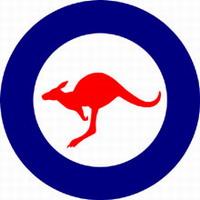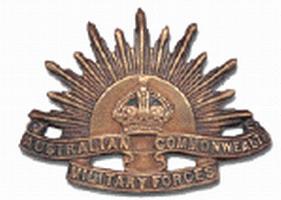|
|
|||
|
|
|
|
|
|
|
|||
AUSTRALIAN DEFENCE FORCE
|
|
|
|
|
|
WE NEED YOUR SUPPORT. |
|
|
|
|
The Australian Army numbered around 28,000 in 1901 so it seems rather strange in a world full of conflict, that today the number of Army personnel stands at around only 25,000. Of course the weaponry available today is far more sophisticated and deadly so the relative number of personnel is considerably greater.
Related topics
World War 1 and 2 | HMAS Sydney
Boer War
Starting with the Boer War in 1899, Australia has had a tradition of involving itself in the wars of others and the Australian Defence Force would be much better named the Australian Attack Force as it has spent most of its existence going overseas to attack other people. In fact the only time it was actually used as a defence force was in holding back the Japanese invasion of New Guinea during World War II.
The Boers, who were descendants of Dutch settlers, occupied the Transvaal and Orange Free State and the British held an area called Cape Colony. The British wanted control of the gold mines that existed in the Transvaal and mounted a raid in 1896. The Boers declared war on the 11th of October 1899. There were some initial Boer successes but they could not take on the might of the British army in pitched battle and resorted to commando style raiding. The war dragged on for some years but the Boers were finally defeated and signed the Treaty of Vereeniging on May 31 1902.
As Australia was not federated at the start of the Boer War, each state sent its own separate contingent to the conflict. After federation 8 more battalions were sent. In all 16,175 Australians fought in the Boer War and all were volunteers. Of these there were 251 killed in action, 267 died from disease and 48 went missing in action. During the Boer war 67 officers and 1162 other ranks enlisted from W.A. The largest number of troops who died during this war did so not from combat but from disease. British forces suffered 7,582 deaths in combat but 13,139 died from various diseases.
When the troops from each state arrived in South Africa they were amalgamated into the First Australian Regiment. This was the first time an amalgamated force from the individual colonies had been created for active service.
Lt. Fred W. Bell (6th Western Australian Mounted Infantry) was the first Australian to be awarded a Victoria Cross for valour for his efforts during a battle at Brakpan in the Transvaal on May 16 1901. In the action, 7 Australians were killed and 10 wounded. Bell stood alone mounting a rear guard while the rest of the Australians withdrew to a better position. Reinforcements arrived and the Boers were eventually routed. (In all Australian soldiers were awarded 5 Victoria Crosses during the conflict.)
It was the execution of Harry Harbord Morant during the Boer war that led Australia to never again place her troops fully under the command of another nation. Harry Morant and Peter Handcock were the last Australian soldiers to ever be tried an executed by their own side. During World War One, 150 Australian troops were sentenced to death by British military tribunals but the Governor General of Australia always refused to sign the execution orders.
The Australian troops serving in the Boer War gained a reputation as being tough, brave and cool headed under fire. At the battle of Brakfontein, fewer than 500 Australian troops (led by Colonel Hore) defended their depot against an attack from at least 2,500 Boers.
Despite the inclination of our leaders to send our troops overseas to attack people who pose no threat to us (notably in Vietnam and Iraq) the A.D.F. has usually been a highly effective and for the most part honourable combatant.
Australian troops have been placed under the command of allied nations in earlier wars. As a result they have suffered far greater casualty rates because they were used as ‘shock troops’ and were sent in as cannon fodder.
See World War One and Two for more information on the A.D.F.
Malaysia and Borneo
Australian troops were deployed to fight Communist guerrilla attacks in Malaysia from 1950-63 and were also deployed in Malaysia again and in Borneo from 1964-66. Australian forces were actively engaged in the conflict from 1955-66 but despite the long period of involvement there were only 39 recorded fatalities and 27 woundings.
Korea and Vietnam
After World War Two, the deployment of Australian troops has been largely due to political issues. The Korean War in 1950-53 saw Australia follow America and Britain and the Vietnam War was almost completely influenced by the desire to please the Americans. Australia is a large country with lots of resources and a small population and it has always needed 'powerful friends' to help guarantee its security. 17,866 Australians served in Korea with 399 fatalities being recorded in combat. (The West Australian contribution to the serving personnel was about 10% of the total.)
The Vietnam conflict saw some 50,000 Australians in military service with 520 combat deaths (61 West Australians) 2,400 woundings and a large number of post combat casualties. Many were soldiers who were unable to cope when they got back to Australia and were given little or no support from the government that had sent them off to war.
Conscription (compulsory service) was introduced by the Federal Government in 1964.
Something most people do not know about the Vietnam war is that while Australia participated in support of America, the Yanks had the gall to charge the Australian Government for every piece of equipment, all rations and even every shell fired by Americans in support of Australian troops. Bearing in mind the lousy reputation of the American artillery units who regularly landed shells on their own forces in almost all wars, I am sure Australian troops would have been just as happy not to get American artillery support.
Recent conflicts
Recent conflicts including Afghanistan, Timor and Iraq have seen troops deployed for the same reasons as they were in Vietnam. The motivation appears to be the desire to please the Americans, in the hope that if Australia is ever threatened, they will come to our aid. The fact is that America only ever acts in its own best interests and would be very unlikely to support Australia if we were attacked.
It is vital for Australia to have its own strong defence force that is capable of defending the country in times of conflict. The recent policy of sending troops to far flung areas of the world and involving them in conflicts that have nothing to do with us, is placing a great strain on the limited resources we have and makes the country vulnerable.
To date Australian armed force members have been awarded 97 Victoria Crosses for outstanding valour on the field of battle. The great majority of these were awarded during World War One with the remainder being awarded for action in the Boer War, Russia, World War Two and Vietnam.
A.N.Z.A.C.
The letters A.N.Z.A.C. - as most Australians know - stand for the Australian and New Zealand Army Corps. What most people don't know is how to use the word when referring to anything but the original Army Corps.
When writing 'Anzac Day' for example the 'nzac' should be written in lower case letters. This applies to other associated things like Anzac Cove and the Anzac Book. Only when making reference to the original Army Corps, should the word be written as ANZAC.
The abbreviation A.N.Z.A.C. was first used by the signal corps of Lt. Gen Birdwood (an English General placed in charge of the Commonwealth forces.) The soldiers adopted the name which was to become synonymous with the Australian and New Zealand troops fighting at Gallipoli.
2,000 soldiers were dead or wounded by the end of the first day's fighting.
The ANZACs were 42,000 soldiers who fought in World War One. The Western Australian contingent departed from Fremantle on October 31st 1914 and anchored up in Gage Roads and were joined by troops who had embarked in Albany on November 2nd. A further contingent left from Albany in December. The West Australian Parliament passed the Anzac Day act in 1919 and became the first state to proclaim Anzac Day a public holiday. (April 25th). Today Anzac Day celebrates the sacrifice of all Australian service men and women but the original ANZACs that fought at Gallipoli (who have now all passed on) remain the inspiration for national day of celebration and remembrance.
Farewell to the ANZACs
|
|
Become a supporter of this website for just $5 a month
|











